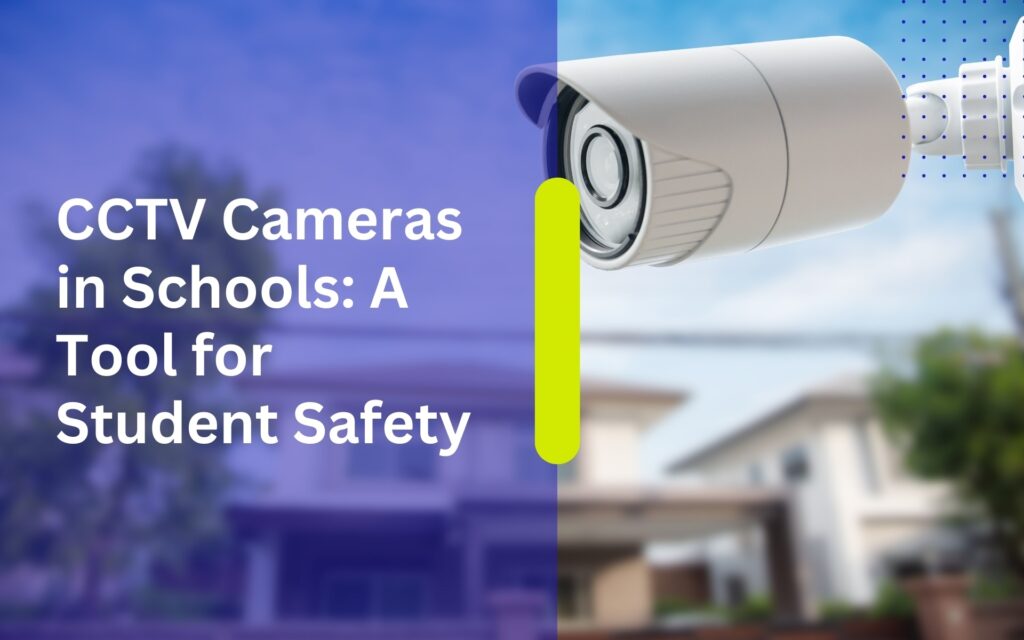MINI PABX Specs Overview. Introduction. In today’s competitive business environment, effective communication is the backbone of productivity and customer service. Whether it is managing internal calls between departments or handling external trunk …
CCTV Cameras in Schools: A Tool for Student Safety

Introduction:
In recent years, the need for comprehensive security measures in educational institutions has become increasingly evident. As schools strive to create a safe and secure environment for students, the integration of advanced technologies has gained prominence. Among these technologies, Closed-Circuit Television (CCTV) cameras have emerged as a crucial tool for enhancing student safety. This article explores the benefits, considerations, and best practices associated with the implementation of CCTV cameras in schools.
I. The Importance of Student Safety in Schools:
Ensuring the safety of students within school premises is a top priority for educators, parents, and policymakers alike. While schools traditionally focus on providing quality education, it is equally important to create an environment where students feel secure. The rise in incidents such as bullying, vandalism, and unauthorized intrusions necessitates the adoption of modern security solutions.
II. The Role of CCTV Cameras in Student Safety:
A. Deterrence and Prevention:
One of the primary functions of CCTV cameras in schools is their deterrent effect on potential wrongdoers. The visible presence of surveillance cameras acts as a psychological deterrent, dissuading individuals from engaging in disruptive or harmful behavior. In turn, this proactive measure contributes to the prevention of incidents and helps maintain a safe learning environment.
B. Monitoring and Incident Response:
CCTV cameras enable real-time monitoring of various areas within a school, including hallways, entrances, and common spaces. This capability allows school administrators and security personnel to respond promptly to incidents such as fights, vandalism, or unauthorized access. By having a comprehensive overview of the school premises, authorities can take immediate action to address issues and ensure the safety of students and staff.
C. Investigation and Resolution:
In the unfortunate event of an incident, CCTV footage serves as valuable evidence for investigations. Whether it’s identifying perpetrators, documenting the sequence of events, or providing insight into the circumstances surrounding an incident, CCTV recordings play a crucial role in resolving disciplinary matters and legal investigations. This accountability aspect contributes to maintaining a safe and transparent school environment.
III. Considerations for Implementing CCTV Cameras in Schools:
A. Privacy Concerns:
While the benefits of CCTV cameras in schools are evident, it is essential to address privacy concerns. Striking a balance between ensuring student safety and respecting privacy rights is paramount. Schools must establish clear policies regarding the use of CCTV cameras, define the areas under surveillance, and communicate these policies to students, parents, and staff.
B. Legal and Ethical Considerations:
Implementing CCTV cameras in schools requires compliance with local laws and regulations. Schools must familiarize themselves with legal frameworks governing surveillance in educational institutions. Additionally, ethical considerations, such as maintaining the dignity of students and staff, should guide the deployment and use of CCTV systems.
C. Integration with Other Security Measures:
CCTV cameras should be viewed as part of a comprehensive security strategy rather than a standalone solution. Integrating CCTV systems with access control systems, alarm systems, and emergency response protocols enhances the overall security infrastructure. Collaborative efforts ensure a multi-faceted approach to student safety.
IV. Best Practices for Implementing CCTV Cameras in Schools:
A. Conducting Security Assessments:
Before implementing CCTV cameras, schools should conduct thorough security assessments to identify vulnerable areas and potential risks. This assessment helps determine the optimal camera placements and the type of surveillance equipment required for effective coverage.
B. Selecting Appropriate Camera Types:
The selection of CCTV cameras depends on the specific needs and characteristics of the school environment. Factors such as camera resolution, coverage area, and environmental conditions play a crucial role in choosing the right surveillance equipment. High-resolution cameras are essential for capturing clear and detailed footage.
C. Establishing Monitoring Protocols:
Define clear protocols for monitoring and managing CCTV footage. Designate responsible personnel for monitoring the cameras in real-time and establish procedures for responding to incidents. Regular training for staff involved in monitoring ensures effective utilization of the CCTV system.
D. Involving Stakeholders:
Engage parents, students, and staff in the decision-making process regarding the implementation of CCTV cameras. Transparency fosters a sense of trust and cooperation within the school community. Communicate the goals, benefits, and guidelines associated with CCTV systems to alleviate concerns and garner support.
V. Addressing Common Misconceptions:
A. Invasion of Privacy:
One common misconception surrounding CCTV cameras in schools is the fear of invasion of privacy. However, by clearly defining surveillance areas and implementing privacy safeguards, schools can mitigate these concerns. Emphasizing the role of CCTV cameras in enhancing overall safety helps dispel misconceptions.
B. Creating a Surveillance Culture:
Another misconception is the notion of creating a surveillance culture within schools. It is essential to emphasize that CCTV cameras are a tool for security enhancement, not a means of constant monitoring. Communicating the limited scope of surveillance contributes to a balanced understanding of their purpose.
Conclusion
In conclusion, the integration of CCTV cameras in schools serves as a proactive and effective measure to enhance student safety. By acting as a deterrent, enabling real-time monitoring, and providing valuable evidence for investigations, CCTV systems contribute to the overall security infrastructure of educational institutions. However, careful consideration of privacy concerns, legal compliance, and ethical considerations is essential for the successful implementation of CCTV cameras in schools. When deployed as part of a comprehensive security strategy and with the support of the school community, CCTV cameras play a vital role in creating a safe and secure learning environment for students.
Related Articles
Internship Completion Celebration: A Treat from Our Interns On September 26, 2025, Friday, the internship completion celebration turned into a memorable occasion filled with heartfelt gratitude, joyful performances, and a sense of …
What is Fiber? Introduction. In an era where digital connectivity drives productivity, communication, and growth, businesses cannot afford unreliable or slow internet connections. From video conferencing and cloud computing to online collaboration …



